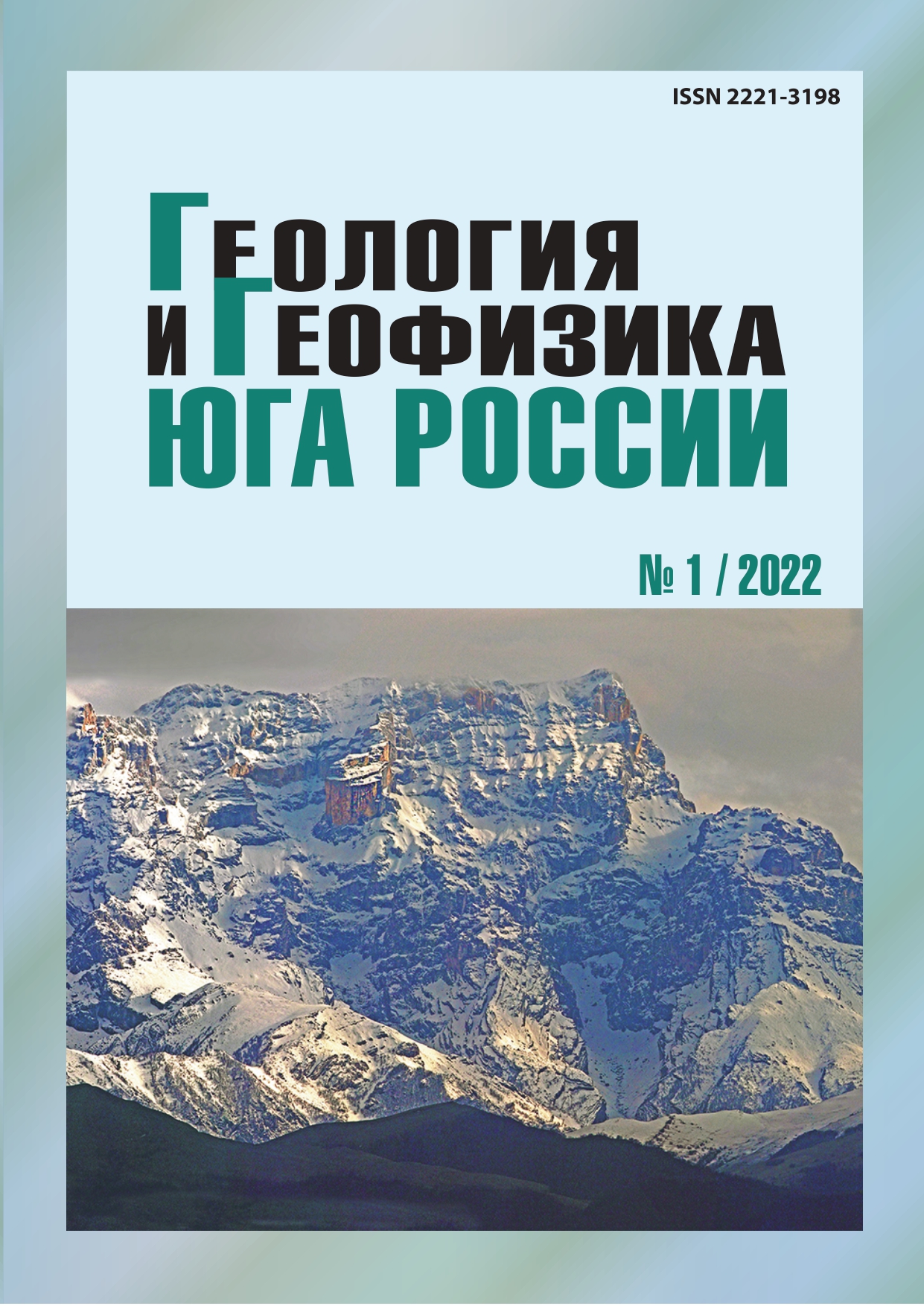Early Permian effusive and subvolcanic formations of the Front Range of the Greater Caucasus (geochemical and metallogenic rock specialization)
Abstract
Relevance. Within the southern part of the Scythian plate, there are known areas of development of Early Permian volcano-plutonic formations and associated gold-sulfide, polymetallic, antimony-mercury and uranium ore objects. Geochemical studies of these rocks are necessary to clarify the features of the development of the region during this time period. The aim of the study is to clarify the geochemical characteristics of the Early Permian volcanic rocks, to decipher their geodynamic position, and to consider the mineralization associated with them. The objects for research are effusive and subvolcanic formations of Early Permian age in the area of the Peredovoi Ridge (PR) of the Greater Caucasus. Research methods included: petrographic description of rocks, analyzes by RFA, ICP-MS; geochemical characteristics; construction and analysis of discriminatory t diagnostic diagrams; comparison of the concentrations of ore elements in the studied and reference rocks of a similar petrochemical type formed in different geodynamic settings. Results. It was found that normal and moderately alkaline effusive and subvolcanic rocks are widespread in the PR zone in the sections of Early Permian rocks. These are moderate and low magnesian, rarely high potassium rocks of the calc-alkaline series with potassium-sodium and sodium types of alkalinity. Comparison of the material parameters of subvolcanic rocks with the petrochemical systematics of granitoids shows that they have features of both S-type and I-type granites. On the Th/Yb – Ta/Yb petrogenetic diagram, figurative points of volcanic and granitoid compositions are located in the rock field of active continental margins. The volcanics are enriched in LREE, LILE and are characterized by negative Nb, Ta, Ti (P) anomalies. The REE spectra of trachyandesite basalts are close to the profile of OIB basalts. All rock varieties have elevated Sb contents and a similar concentration profile of incompatible elements. As a result, it was assumed that the Early Permian effusive and subvolcanic formations were formed within the volcano-plutonic belt on the active continental margin. The Early Permian phase of magmatic activation was apparently associated with the rear rift originating here. Analysis of the material composition of the studied rocks showed that they have “mixed” characteristics, having the features of igneous formations of various genetic and geochemical types. It is shown that gold-sulfide, antimony-mercury and uranium mineralization is associated with Early Permian effusive and subvolcanic rocks.


